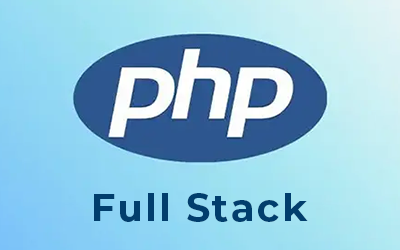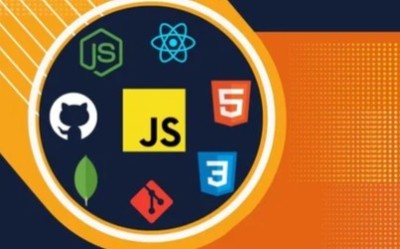Highlights:- Cloud-Native Application Development: Master the design and development of cloud-native
applications using microservices and containerization. - Advanced Cloud Architecture: Learn how to...
Highlights:
- Cloud-Native Application Development: Master the design and development of cloud-native
applications using microservices and containerization. - Advanced Cloud Architecture: Learn how to design enterprise-level cloud architectures that arescalable, resilient, and fault-tolerant. - Kubernetes and Container Orchestration: Gain in-depth knowledge of Kubernetes and container
orchestration to manage microservices at scale. - Advanced Cloud Security: Explore advanced cloud security strategies, including identity
management, threat detection, and data protection. - Cloud Automation at Scale: Learn to implement infrastructure automation across large-scale cloudenvironments using advanced tools and techniques. - Cloud Performance Optimization: Understand how to monitor and optimize cloud performancefor
high-availability systems.
- Multi-Cloud and Hybrid Cloud Solutions: Design multi-cloud and hybrid cloud architectures for
greater flexibility and redundancy. - Cloud Governance and Compliance: Master best practices in cloud governance, compliance, andrisk management for large organizations.
Course Objective:
By the end of this course, you will be able to: - Design and implement cloud-native applications using microservices and containerized
environments. - Architect highly available, secure, and scalable cloud solutions for enterprise-level applications. - Manage containerized applications using Kubernetes and other container orchestration tools. - Implement advanced cloud security practices and integrate them into cloud-based systems. - Automate the provisioning, configuration, and management of cloud infrastructure using advancedcloud automation tools. - Optimize cloud resource usage for performance, cost, and scalability. - Design and implement multi-cloud and hybrid cloud architectures to ensure redundancy andflexibility. - Ensure compliance with regulatory standards and manage risk in cloud environments
Course Structure:
1. Cloud-Native Application Development
- Introduction to Cloud-Native Applications: Understanding the principles of cloud-native
application design. - Microservices Architecture: Designing scalable and decoupled applications using microservices. - Containerization with Docker: Building and deploying containerized applications using Docker. - Cloud-Native Application Development Frameworks: Leveraging frameworks like Spring Boot, Kubernetes, and AWS Lambda for cloud-native development.
- Continuous Integration and Continuous Deployment (CI/CD): Automating the software deliverypipeline in cloud-native applications. - Advanced DevOps Practices for Cloud-Native Apps: Implementing advanced DevOps strategies toautomate and optimize development and deployment.
2. Advanced Cloud Architecture
- Enterprise-Level Cloud Architecture: Principles and practices for designing large-scale cloudsystems. - Multi-Tier and Microservices Architectures: Building cloud architectures using microservices, serverless computing, and other modern paradigms. - Load Balancing and Auto-Scaling: Techniques for implementing automatic scaling and loadbalancing to handle varying traffic loads. - Cloud Disaster Recovery and Business Continuity: Designing strategies for disaster recovery andhigh availability in cloud environments. - Global Cloud Architectures: Designing systems that leverage multiple cloud regions and
availability zones for global reach and fault tolerance. - Hybrid Cloud Solutions: Integrating on-premises infrastructure with cloud systems for hybridcloudenvironments.
3. Kubernetes and Container Orchestration
- Introduction to Kubernetes: Understanding the Kubernetes architecture and core components
(pods, nodes, clusters). - Container Orchestration with Kubernetes: Managing containerized applications at scale usingKubernetes. - Kubernetes Networking and Storage: Implementing networking solutions and persistent storagefor Kubernetes clusters. - Kubernetes Security: Ensuring secure communication, access control, and vulnerability
management within Kubernetes environments. - Kubernetes for Multi-Cloud and Hybrid Cloud: Deploying Kubernetes clusters across multipleclouds for resilience and portability. - Helm Charts and Kubernetes Deployment Strategies: Managing complex Kubernetes deploymentsusing Helm charts.
4. Advanced Cloud Security
- Identity and Access Management (IAM): Implementing fine-grained access control and identitymanagement at scale in cloud environments. - Cloud Security Architectures: Designing secure cloud infrastructures that adhere to best securitypractices (e.g., Zero Trust, least privilege). - Threat Detection and Mitigation: Advanced techniques for detecting, preventing, and respondingto security threats in the cloud. - Data Protection in the Cloud: Implementing encryption, tokenization, and data masking toprotect
sensitive data in cloud environments. - Compliance and Regulatory Considerations: Understanding and ensuring compliance with
standards such as GDPR, HIPAA, PCI-DSS, and SOC 2. - Cloud Security Automation: Automating security checks and response mechanisms to mitigatesecurity risks and breaches.
5. Cloud Automation at Scale
- Infrastructure as Code (IaC) Advanced Concepts: Using Terraform, CloudFormation, and Ansibletoautomate large-scale cloud infrastructure provisioning. - Cloud Configuration Management: Implementing configuration management tools like Chef, Puppet, and Ansible for automated configuration in the cloud. - Cloud Automation with Serverless: Leveraging serverless computing for automated infrastructurescaling and management. - CI/CD Pipelines for Cloud Automation: Integrating advanced CI/CD pipelines to automate softwaretesting, deployment, and monitoring. - Automated Monitoring and Logging: Implementing monitoring and logging at scale with tools likePrometheus, Grafana, and ELK stack. - Cloud Automation for Cost Optimization: Automating resource management to optimize cloudspending, including auto-scaling and right-sizing.
6. Cloud Performance Optimization
- Cloud Performance Monitoring: Implementing strategies for monitoring cloud performanceusingcloud-native tools and third-party solutions. - Optimizing Cloud Resource Allocation: Techniques for optimizing compute, storage, and networkresources for cost and performance. - Content Delivery Networks (CDNs): Using CDNs to accelerate content delivery and reduce latencyfor global applications. - Caching Strategies in the Cloud: Implementing caching mechanisms to improve applicationresponse times and reduce cloud costs. - Load Testing and Performance Tuning: Techniques for load testing and performance tuning of
cloud-based applications. - Auto-Scaling and Load Balancing: Configuring auto-scaling groups and load balancing for highavailability and performance.
7. Multi-Cloud and Hybrid Cloud Solutions
- Designing Multi-Cloud Architectures: Building systems that use multiple cloud providers for
redundancy, risk management, and flexibility. - Hybrid Cloud Integration: Strategies for integrating on-premise environments with public andprivate cloud infrastructures. - Cloud Portability: Ensuring application portability across multiple cloud providers and avoidingvendor lock-in. - Cloud Federation: Managing distributed cloud systems through federated identity and governance. - Multi-Cloud Cost Management: Strategies for managing costs across multiple cloud providers
using cloud cost management tools.
8. Cloud Governance and Compliance
- Cloud Governance Frameworks: Establishing governance models for managing cloud resources, budgets, and compliance. - Cloud Auditing and Risk Management: Implementing continuous auditing, risk assessment, andcompliance monitoring in the cloud. - Cloud Billing and Financial Management: Tools and techniques for managing cloud spending andbudgeting across large organizations.
- Regulatory Compliance in Cloud: Ensuring compliance with laws and standards, including SOC2, ISO 27001, and GDPR. - Cloud Policy Management: Creating and enforcing policies for security, access control, andresource usage in the cloud.
9. Capstone Project and Real-World Applications
- Hands-on Cloud Labs: Build and deploy advanced cloud solutions using Kubernetes, serverless
computing, and cloud-native technologies. - Multi-Cloud Architecture Design: Create a multi-cloud architecture that leverages the strengths of
multiple cloud providers. - Advanced Cloud Security Implementation: Implement a secure cloud environment following best
practices for identity management, data protection, and access control. - Cloud Automation Project: Automate the provisioning, deployment, and management of a cloudinfrastructure at scale. - Performance Optimization Challenge: Optimize a cloud-based application for performance, cost, and scalability. - Final Project Presentation: Present a comprehensive solution involving cloud architecture, security, automation, and optimization strategies.
Learning Methodology:
- Interactive Lessons: Advanced theoretical lessons combined with case studies and real-worldexamples to help you understand complex cloud concepts. - Hands-on Labs: Work on live projects and lab exercises to build advanced cloud architectures andsolutions. - Assessments and Quizzes: Reinforce learning with quizzes and assignments after each moduletoensure mastery of advanced concepts. - Live Sessions: Participate in live sessions with instructors for troubleshooting, Q&A, and deepdivesinto complex topics. - Discussion Forums: Collaborate with peers to discuss solutions, share ideas, and solve advancedcloud-related challenges.
Who Should Enroll:
- Experienced Cloud Professionals: Individuals with a basic understanding of cloud computing lookingto advance their skills. - Cloud Architects: Professionals responsible for designing and managing cloud infrastructures at anenterprise level. - DevOps Engineers: Those focused on automating and optimizing cloud environments throughadvanced DevOps practices. - Security Engineers: Cloud security professionals who want to deepen their knowledge of advancedsecurity strategies for cloud environments. - IT Managers: Professionals managing cloud environments who need to implement and overseecomplex cloud solutions. - Students: Advanced learners in computer science, cloud computing, or information technologywhowish to build a career in cloud solutions. The Cloud Computing Advanced course will help you elevate your cloud skills to the next level, preparing you to design, deploy, and manage sophisticated cloud infrastructures for modern
enterprises. Whether you're looking to master cloud-native development, multi-cloud strategies, or
advanced security practices, this course provides the tools and techniques you need to succeedinthe advanced cloud computing landscape.













